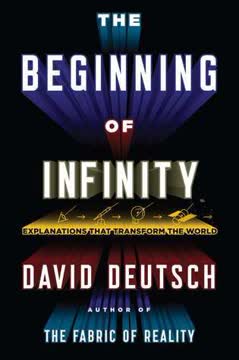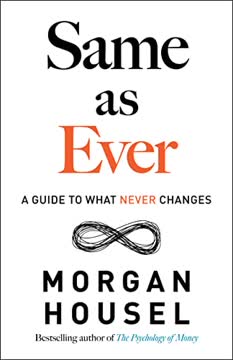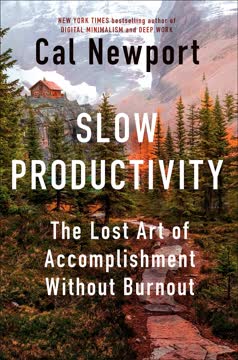Key Takeaways
1. Communities form around shared activities and purpose
The secret to getting people together is this: build your community with people, not for them.
Shared purpose is essential. Communities thrive when members come together over a common interest or goal. This shared purpose provides the foundation for all community activities and interactions. It's not enough to simply gather people; they must be united by a meaningful reason to connect.
Activities bring people together. Regular shared activities are the lifeblood of communities. These can range from in-person meetups to online collaborations, but they should always align with the community's purpose. Examples include:
- Running clubs meeting for weekly jogs
- Online forums discussing shared interests
- Volunteer groups working towards a common cause
Build collaboratively. Instead of creating a community for people, involve them in the process from the beginning. This collaborative approach ensures that the community truly reflects its members' needs and desires.
2. Start with a small group of passionate allies
Genuine passion attracts passionate people.
Find your kindling. Begin by identifying a core group of early supporters who share your enthusiasm for the community's purpose. These initial members will set the tone and direction for the future.
Quality over quantity. Focus on attracting genuinely interested individuals rather than trying to grow numbers rapidly. A small, dedicated group is more valuable than a large, disengaged one.
Encourage organic growth. As your core group becomes more established, they will naturally attract like-minded individuals. This organic growth ensures that new members align with the community's values and purpose.
3. Create spaces for meaningful conversations
Personal relationships bond people in communities.
Provide platforms for interaction. Establish spaces where members can freely connect and converse. This could be:
- Online forums or social media groups
- Regular in-person meetups
- Collaborative projects or events
Facilitate discussions. Especially in the early stages, take an active role in prompting conversations and making introductions. This helps break the ice and encourages participation from all members.
Establish community guidelines. Create a code of conduct to ensure that conversations remain respectful and aligned with the community's purpose. This structure helps foster a safe and welcoming environment for all members.
4. Cultivate a unique community identity
Authentic, shared ownership of the group's identity only fuels a community's fire.
Develop shared symbols. Create badges, logos, or other visual identifiers that members can use to express their affiliation with the community. These symbols help foster a sense of belonging and unity.
Establish rituals. Develop unique practices or traditions that are specific to your community. These could be:
- Special greetings or handshakes
- Regular celebratory events
- Shared goals or challenges
Create a common language. Encourage the development of community-specific terms or phrases. This shared vocabulary strengthens bonds between members and creates a sense of insider knowledge.
5. Empower members to become leaders
Amateurs try to manage a community, but great leaders create more leaders.
Identify potential leaders. Look for highly engaged members who consistently contribute and show initiative. These "hand-raisers" are prime candidates for leadership roles.
Create leadership opportunities. Develop various roles and responsibilities within the community that allow members to take on greater ownership. This could include:
- Event organizers
- Content creators
- Mentors for new members
Provide training and support. Offer guidance and resources to help new leaders succeed in their roles. This ensures that they feel confident and prepared to take on additional responsibilities.
6. Provide support systems for community leaders
Your goal is to provide the support that leaders need, when they need it.
Map the leader journey. Outline the key steps and responsibilities of community leaders to identify areas where support is needed.
Develop resources. Create tools, templates, and guides that help leaders perform their roles more effectively. This could include:
- Event planning checklists
- Communication templates
- Best practices documentation
Offer ongoing guidance. Establish regular check-ins or mentorship programs to provide continuous support and feedback to community leaders.
7. Celebrate achievements and milestones together
Celebrations are festive moments that revitalize a group.
Define clear intentions. Ensure that celebrations have a purpose beyond simply gathering people. This could be:
- Recognizing community accomplishments
- Reinforcing shared values and goals
- Energizing members for future initiatives
Choose appropriate formats. Select celebration styles that align with your community's identity and purpose. This could range from formal galas to casual potlucks or online events.
Incorporate community elements. Infuse celebrations with unique aspects of your community's identity, such as shared symbols, rituals, or language.
8. Pay attention to who keeps showing up
If you want to gain momentum, you'll have to keep at it week after week.
Track engagement. Monitor which members consistently participate in community activities and conversations. This data helps identify your most committed members.
Gather feedback. Regularly seek input from active members about what's working well and what could be improved. This information is crucial for the community's growth and evolution.
Recognize and reward participation. Acknowledge and appreciate members who consistently contribute to the community. This could involve:
- Public recognition or awards
- Special privileges or access
- Opportunities for greater involvement or leadership
9. Adapt and evolve as the community grows
Because change is inevitable, don't try to fight it. Instead, build a community that can respond to it.
Stay flexible. Be prepared to adjust your community's structure, activities, or focus as it grows and evolves. What works for a small group may not be effective for a larger one.
Empower members to lead change. Encourage long-time members to take ownership of the community's direction. Their deep understanding of the community's values and history can help guide its evolution.
Regularly reassess goals. Periodically review and update your community's purpose and objectives to ensure they remain relevant and meaningful to members.
Last updated:
FAQ
What's "Get Together: How to build a community with your people" about?
- Community Building Guide: "Get Together" is a comprehensive guide on how to cultivate a community by working with people rather than for them. It emphasizes collaboration and shared purpose.
- Stages of Community Development: The book outlines three stages of building a community: sparking the flame, stoking the fire, and passing the torch, each with specific strategies and principles.
- Real-Life Examples: It includes stories and examples from various successful communities, such as run clubs, online groups, and educational movements, to illustrate its points.
- Authors' Expertise: Written by Bailey Richardson, Kevin Huynh, and Kai Elmer Sotto, who have extensive experience in community building with organizations like Instagram and Facebook.
Why should I read "Get Together"?
- Practical Advice: The book offers actionable advice for anyone looking to start or grow a community, whether for personal, professional, or social purposes.
- Diverse Applications: It provides insights applicable to a wide range of communities, from local clubs to global online networks.
- Empowerment Focus: Emphasizes empowering members to take leadership roles, which can lead to more sustainable and resilient communities.
- Inspiration and Motivation: Through real-life stories, the book inspires readers to take the first step in community building and shows the impact of collective action.
What are the key takeaways of "Get Together"?
- Build With, Not For: The central theme is to build communities with people, involving them in decision-making and leadership roles.
- Stages of Growth: Understand the three stages of community development: sparking interest, maintaining engagement, and empowering leaders.
- Importance of Identity: Cultivating a shared identity through rituals, language, and symbols strengthens community bonds.
- Role of Leaders: Identifying and developing leaders within the community is crucial for long-term success and sustainability.
How does "Get Together" suggest sparking a community?
- Identify Your People: Start by pinpointing who you want to gather and why, focusing on shared interests or goals.
- First Activity: Organize an initial activity that is purposeful, participatory, and repeatable to engage members.
- Encourage Dialogue: Create spaces for members to communicate and connect, fostering relationships and collaboration.
- Overcome Fear: Address fears of low turnout by being a courageous leader willing to take the first step.
What strategies does "Get Together" offer for maintaining community engagement?
- Attract New Members: Use a compelling origin story and shareable content to draw in new members authentically.
- Cultivate Identity: Develop a strong community identity through badges, rituals, and shared language.
- Track Participation: Monitor who keeps showing up and why, focusing on retention and understanding member motivations.
- Spot Hand-Raisers: Identify and nurture the most engaged members who can take on leadership roles.
How does "Get Together" define the role of leaders in a community?
- Develop Leaders: Focus on creating more leaders rather than managing members, empowering them to take ownership.
- Genuine and Qualified: Look for leaders who are genuinely passionate and qualified to take on responsibilities.
- Feedback and Growth: Establish a feedback process to help leaders grow and transition roles as needed.
- Catalysts for Change: Recognize that a small group of passionate leaders can drive significant impact and growth.
What are some best practices for community celebrations according to "Get Together"?
- Clear Purpose: Define the intention of the celebration, aligning it with the community's overall purpose.
- Relevant Format: Choose a format that resonates with the community's identity and goals, whether in-person or online.
- Incorporate Identity: Use the community's badges, rituals, and language to enhance the celebration's impact.
- Reflect Achievements: Use celebrations as an opportunity to reflect on and acknowledge the community's accomplishments.
What are the best quotes from "Get Together" and what do they mean?
- "Build with, not for": This quote encapsulates the book's core message of collaboration and shared ownership in community building.
- "Fires can’t be made with dead embers": Emphasizes the need for active, passionate participation to sustain a community.
- "A community isn’t a community unless it’s organizing itself": Highlights the importance of empowering members to take initiative and lead.
- "Attention is the rarest and purest form of generosity": Stresses the value of listening and understanding members' needs and motivations.
How does "Get Together" suggest handling challenges and missteps in a community?
- Monitor Sentiment: Pay attention to community feedback to detect issues early and address them promptly.
- Ownership and Transparency: Take responsibility for mistakes and communicate openly with members to rebuild trust.
- Engage Key Members: Involve long-term and emerging leaders in discussions to navigate challenges effectively.
- Learn and Adapt: Use missteps as learning opportunities to improve future decision-making and community resilience.
What is the significance of rituals and language in "Get Together"?
- Foster Connection: Rituals and shared language help members feel connected to each other and the community's history.
- Strengthen Identity: They reinforce the community's identity, making it more cohesive and attractive to new members.
- Encourage Participation: Rituals provide structured opportunities for members to engage and contribute.
- Adapt and Evolve: As the community grows, rituals and language can evolve to reflect new members and changing dynamics.
How does "Get Together" address the concept of social capital?
- Definition: Social capital refers to the value of social networks and the benefits that arise from them, such as increased productivity and support.
- Community as Asset: A thriving community is seen as a form of social capital that extends individual and collective capacity.
- Collaboration Benefits: By joining forces, members can achieve more together than they could alone, enhancing both personal and community growth.
- Fun and Fulfillment: Building social capital through community involvement is not only productive but also enjoyable and rewarding.
What resources does "Get Together" provide for aspiring community builders?
- Practical Tools: The book offers checklists, prompts, and principles for each stage of community development.
- Real-Life Examples: It includes stories from various successful communities to illustrate key concepts and strategies.
- Online Resources: Readers are encouraged to visit gettogetherbook.com for additional interviews, transcripts, and involvement opportunities.
- Community Support: The authors invite readers to connect and share their community-building experiences for mutual learning and support.
Review Summary
Get Together receives mixed reviews, with ratings ranging from 1 to 5 stars. Positive reviews praise its practical advice for community building, actionable steps, and engaging examples. Critics argue it lacks depth, focuses too much on corporate communities, and contains filler content. Some readers find it valuable for starting and growing communities, while others feel it oversimplifies complex social dynamics. The book's structure, with summaries and action items, is appreciated by many. Overall, it's seen as a useful guide for beginners but may disappoint more experienced community leaders.
Similar Books










Download PDF
Download EPUB
.epub digital book format is ideal for reading ebooks on phones, tablets, and e-readers.




